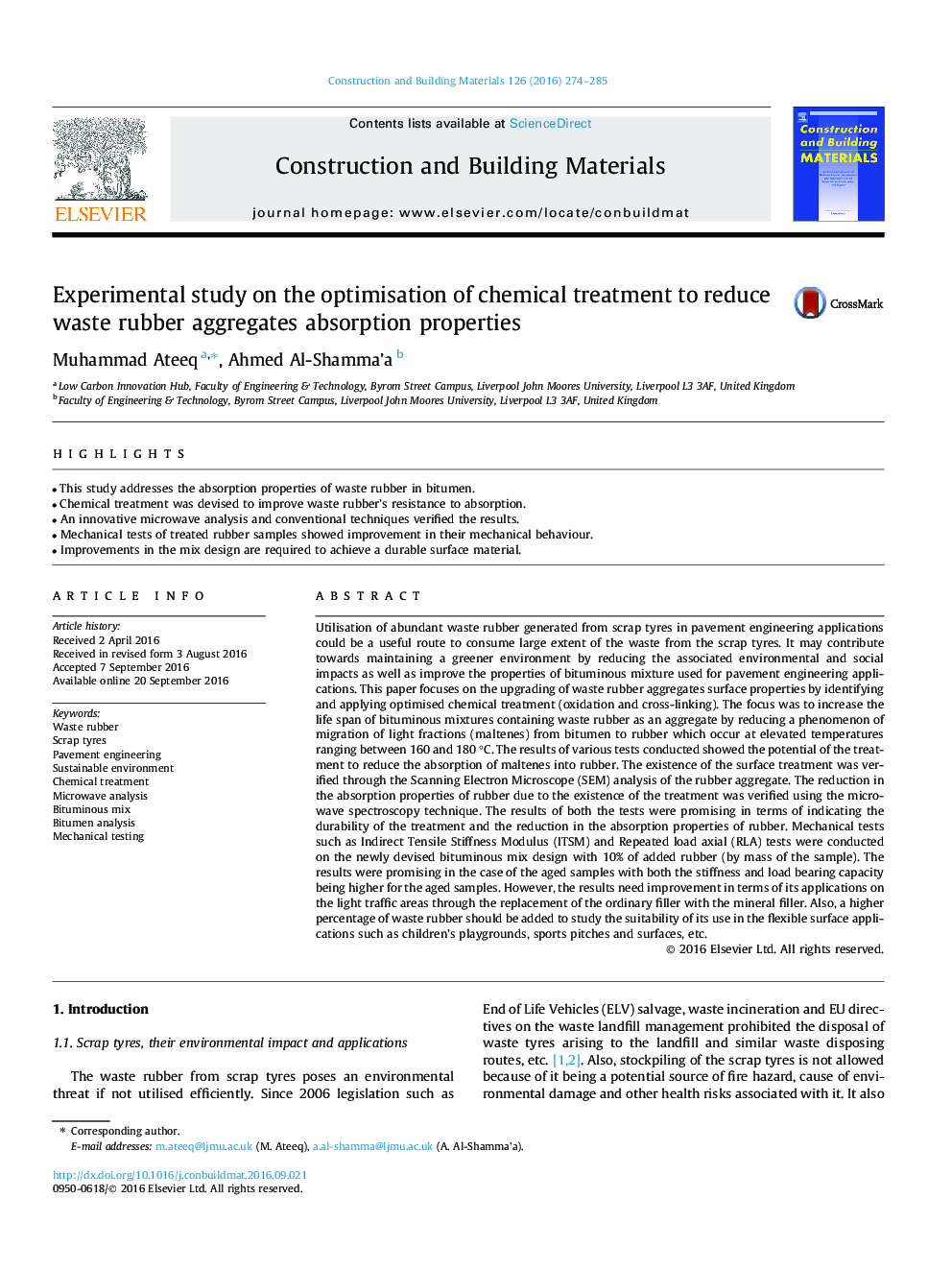| Article ID | Journal | Published Year | Pages | File Type |
|---|---|---|---|---|
| 6480862 | Construction and Building Materials | 2016 | 12 Pages |
â¢This study addresses the absorption properties of waste rubber in bitumen.â¢Chemical treatment was devised to improve waste rubber's resistance to absorption.â¢An innovative microwave analysis and conventional techniques verified the results.â¢Mechanical tests of treated rubber samples showed improvement in their mechanical behaviour.â¢Improvements in the mix design are required to achieve a durable surface material.
Utilisation of abundant waste rubber generated from scrap tyres in pavement engineering applications could be a useful route to consume large extent of the waste from the scrap tyres. It may contribute towards maintaining a greener environment by reducing the associated environmental and social impacts as well as improve the properties of bituminous mixture used for pavement engineering applications. This paper focuses on the upgrading of waste rubber aggregates surface properties by identifying and applying optimised chemical treatment (oxidation and cross-linking). The focus was to increase the life span of bituminous mixtures containing waste rubber as an aggregate by reducing a phenomenon of migration of light fractions (maltenes) from bitumen to rubber which occur at elevated temperatures ranging between 160 and 180 °C. The results of various tests conducted showed the potential of the treatment to reduce the absorption of maltenes into rubber. The existence of the surface treatment was verified through the Scanning Electron Microscope (SEM) analysis of the rubber aggregate. The reduction in the absorption properties of rubber due to the existence of the treatment was verified using the microwave spectroscopy technique. The results of both the tests were promising in terms of indicating the durability of the treatment and the reduction in the absorption properties of rubber. Mechanical tests such as Indirect Tensile Stiffness Modulus (ITSM) and Repeated load axial (RLA) tests were conducted on the newly devised bituminous mix design with 10% of added rubber (by mass of the sample). The results were promising in the case of the aged samples with both the stiffness and load bearing capacity being higher for the aged samples. However, the results need improvement in terms of its applications on the light traffic areas through the replacement of the ordinary filler with the mineral filler. Also, a higher percentage of waste rubber should be added to study the suitability of its use in the flexible surface applications such as children's playgrounds, sports pitches and surfaces, etc.
